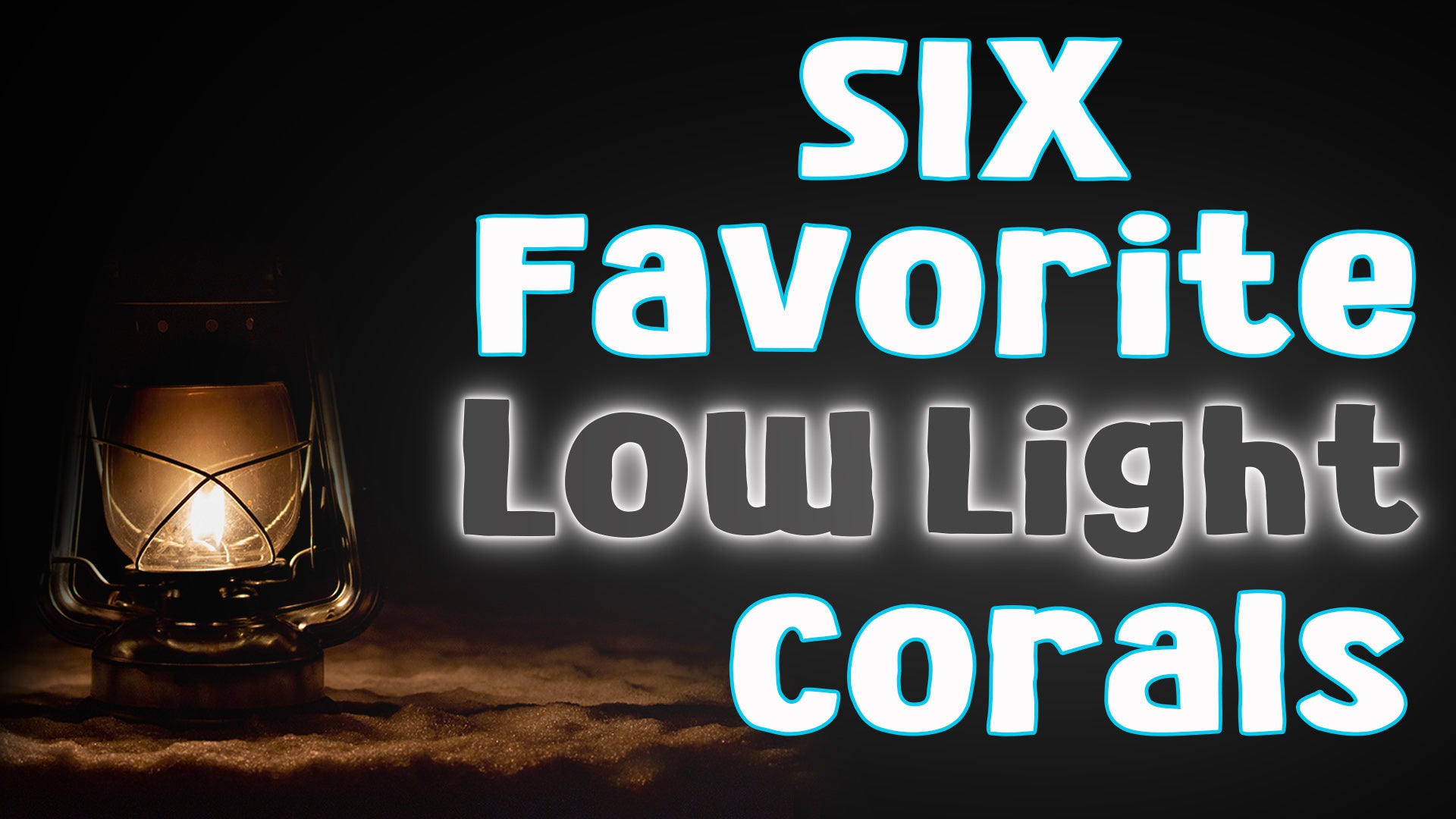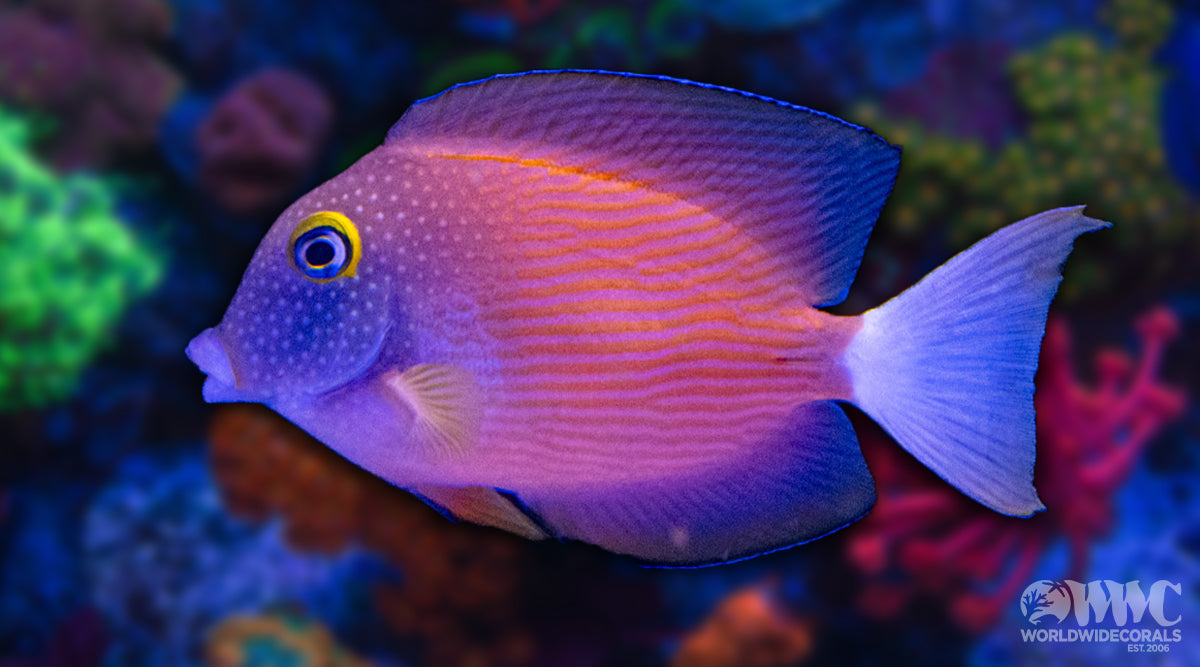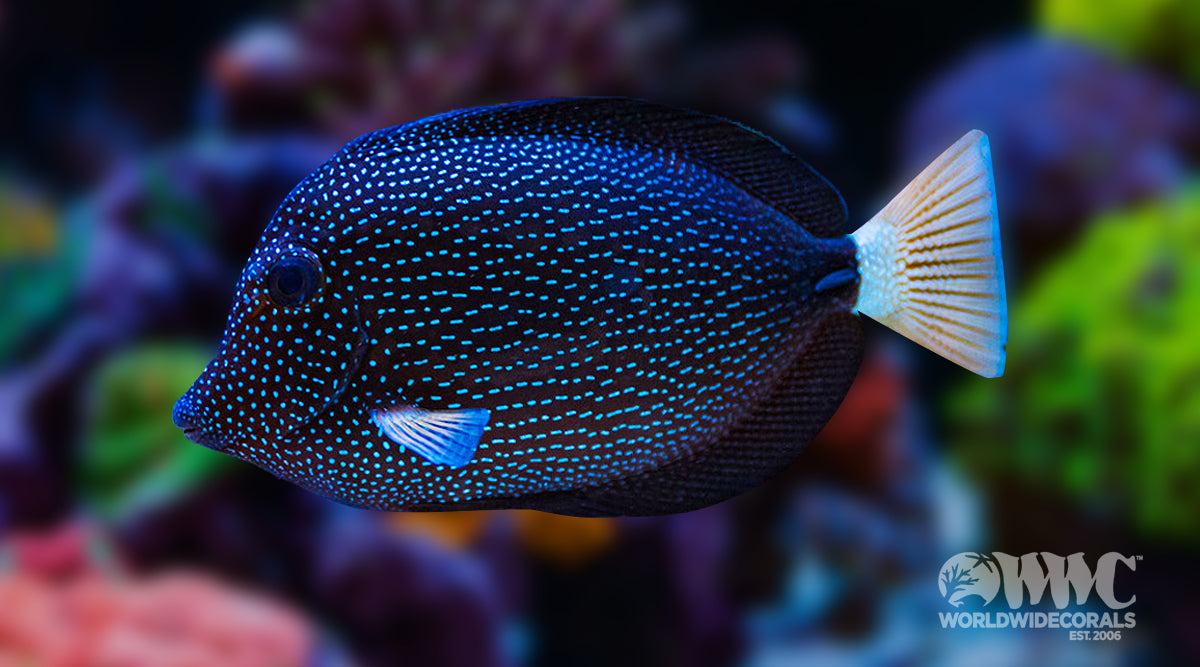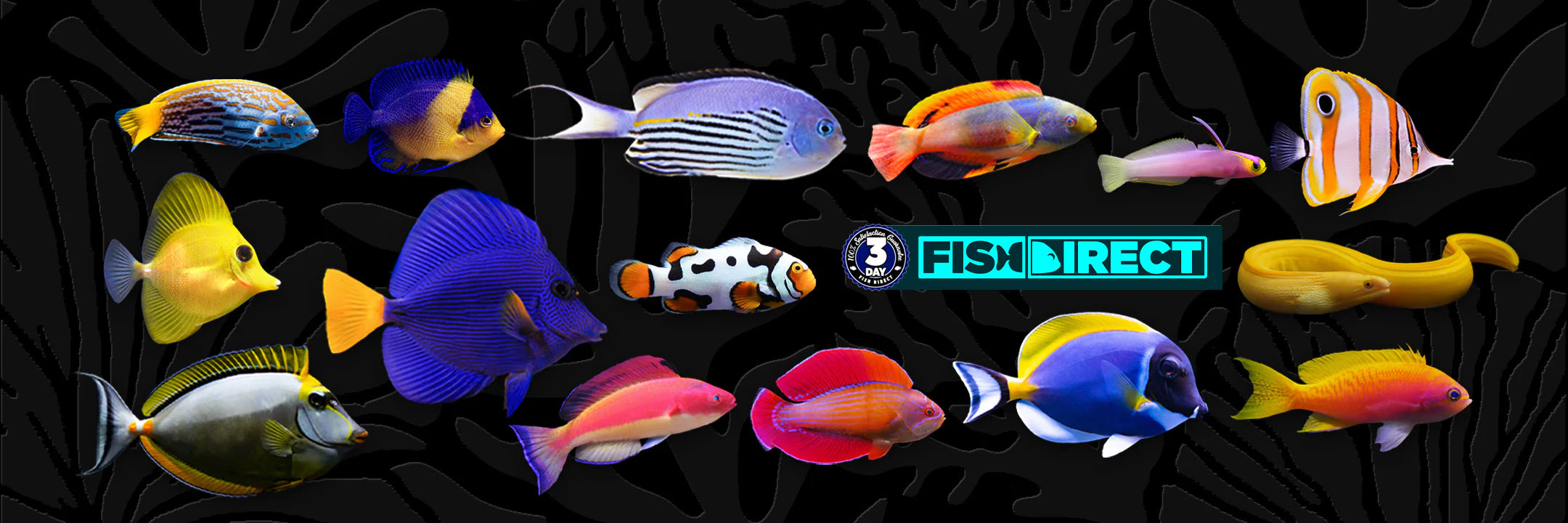
When thinking about colorful corals, it's understandable to assume they are that way because of intense bright lighting, but that’s not always the case. In fact there is a whole group of photosynthetic corals which thrive under low lighting.
Most species of coral being kept in home aquariums contain photosynthetic algae called zooxanthallae that need light to survive, so how do we determine if they are getting enough light? There is a tool called a PAR meter that can be placed in a tank. The meter will measure the intensity of the wavelengths in the tank at that specific spot and produce a PAR reading.
When a coral is called a ‘low light’ or a ‘high light’ coral, those terms are referring to the recommended PAR reading. Low light corals are considered to be in the range of 50-100 PAR. Many factors play a role in what makes a coral thrive, so it's understandable that some of these ranges may vary. Generally speaking, low light corals are hardy and are great corals for beginners because of their ease of care and their vivid colors. The following 6 corals are a few of the more popular low light corals:
Candy Canes Corals / Trumpet corals / Caulastrea furcata
One popular low light coral are the Candy Cane Corals (Caulastrea furcata) though you might have also heard them called Trumpet or even Bullseye corals. There are a few different colors these come in including green, a combination of red and green, but one of the more popular is the neon green candy cane corals. They are so bright and are easily visible in a tank from any distance.
Light, Flow, and Placement
Even though these corals are brightly colored, they don’t need as much light as you might think. They will thrive in low to moderate lighting or between 50-150 PAR. When placing this coral in a tank, look for an area where it will get low to moderate flow as well as lighting.
Water Parameters
This hardy coral is great for beginners, as it can be fairly inexpensive and somewhat forgiving when it comes to water parameters. If things are off, its fleshy polyps will start to recede and pull in, giving a good indication that something in the tank is off.
Blastos / Blastomussa sp. / Pineapple corals
Blastomussa coral or blastos as they are often called, are a low light, LPS coral that have grown in popularity over the last few years. The two types of Blastos commonly for sale in the aquarium trade are typically either a Blastomussa wellsi or a Blastomussa merletti.
Light, Flow, and Placement
Pineapple or Blastomussa corals do well when placed in an area somewhere between the middle and the bottom of the tank where they will get low to moderate flow. Most importantly, the spot they are placed in should also be in an area that gets low light (PAR 50-100) . Blastos will thrive under low light, continuing to display their colorful polyps.
Water Parameters
Much like the mushrooms they can resemble, Blastos are flexible and forgiving when it comes to water parameters. They will tolerate swings which is one reason they can be a great coral for beginning aquarium hobbyists. These corals do utilize calcium in the water to build their stony skeletons, so keeping up on water testing and dosing is important.
Zoanthids / Button Coral / Zoanthus sp.
Zoanthids or zoas are very popular with hobbyists from beginners to experts. Sometimes called button corals, the designer names of the various color morphs include ones like Pink Hallucinations, Campfires, Utter Chaos, and Blue hornets. There are easily more than 100 different morphs of zoas on the market and many of them like low lighting. They are a great option to add color to a tank especially because you are not just limited to 1 or 2 color morphs.
Light, Flow, and Placement
The morphs mentioned above are just a few of the zoas that like low light. They will do well when placed on the sandbed as well as on the rock work between the middle and bottom of the tank. Their placement should also take water flow into consideration. These corals appreciate a moderate to high rate of flow which will help to keep food and waste particles from being trapped on their polyps and in between their stems.
Water Parameters
Many types of zoanthids are especially great for beginners as they are forgiving when water parameters vary. They are unique in that they prefer the water to be a little bit dirty and don’t do well when the nitrates and phosphates are low or near zero.
Mushrooms / Disk Anemone / Discosoma sp. / Rhodactis sp. / Ricordea sp.
Another great example of an easy coral are mushrooms. These soft corals can be split into 3 groups- Discosoma, Rhodactis, and Ricordea. They come in a bunch of colors, patterns, and textures and can range in price from a few dollars for the more common mushrooms to hundreds for some of the bounce mushrooms.
Light, Flow, and Placement
Mushrooms, Ricordia especially, tend to prefer low to moderate lighting between 50-150 PAR. While they are okay with a range of lighting, when it comes to flow, they prefer low flow areas. If they are unhappy with the lighting and flow in the area where they are situated, they have the ability to move around the tank until they find a spot that is more suitable.
Water Parameters
As with many of the corals in this list, mushrooms don’t need very specific water parameters. Similarly to the zoanthids, mushrooms will even thrive in water that is a bit dirty.
Green Star Polyp / GSP / Pachyclavularia violacea
Green Star Polyps, often referred to as GSP are easy to cultivate and it is possible to get them as aquacultured frags. In addition to zoas and mushrooms, GSP are a well known beginner coral. Their bright green color can make it look like a tank has a fluffy mat of green grass that gently moves with the flow of the water which adds a nice layer of movement to any tank.
Light, Flow, and Placement
When it comes to light requirements, these corals will do great in many tank placements from low light to moderate and higher lighting. One thing they do prefer is to have a higher amount of flow.
Water Parameters
The water parameter requirements for the green star polyps is pretty standard. If you notice their green tentacles consistently pulled in, consider it a sign that one of the parameters is out of line and it's time to do a water change.
Chalice / GSP / Echinophyllia sp.
Echinophyllia sp. or Chalice corals are a great coral for tanks with low light areas. It is a slow growing, hardy coral that can either form plates, or will encrust itself on existing rockwork. These LPS corals come in a variety of different colors and patterns that melt together to create stunning masterpieces like the Jason Fox Raja Rampage, WWC Nacho Cheese, Oregon Mummy Eye, Frosted Fire, and WWC Hologram.
Light, Flow, and Placement
When determining the placement for a chalice coral, it is best to situate it in an area that gets low light (50-100 PAR) and low to moderate flow. The goal is to make sure there is enough flow so that detritus doesn’t stay on its surface, but not much more than that.
Water Parameters
Chalice corals are another excellent example of a hardy coral that are great for hobbyists just starting out. They like having clean water but they are okay with the water having a bit of nutrients. While they do tolerate a variety of water parameters, it's important to test the parameters above regularly, as they do use minerals and elements from the water column, like calcium, to form their skeletons.
If one of the corals on this list seems a great addition to your tank, let us know so we can help!





